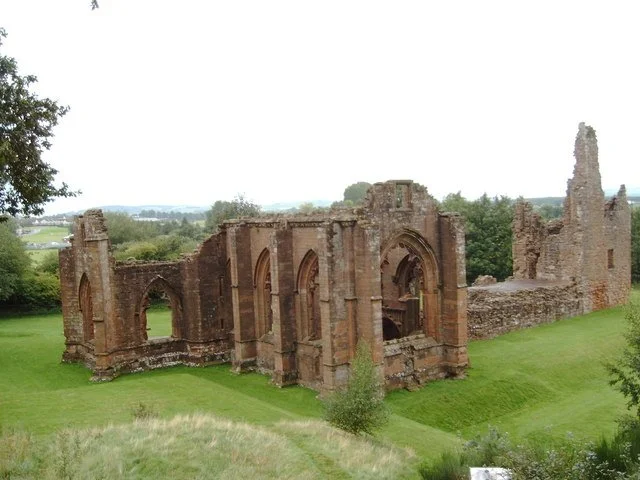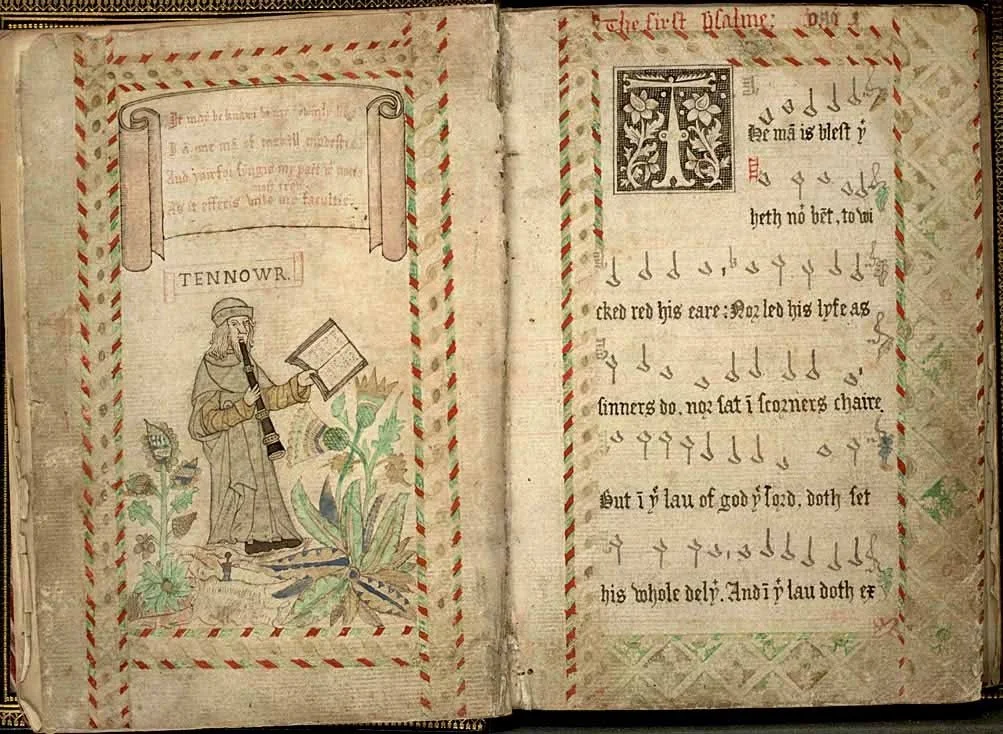What music from Renaissance Scotland?!
Artistic Director Rory McCleery blows the dust off forgotten Scottish manuscripts
For many, the initial reaction when we mention we’re performing music from Renaissance Scotland is “what music from Renaissance Scotland? I didn’t know there was any!” For those a little more versed in the subject, the answer might be “Ah, you mean Robert Carver!” Carver’s music has enjoyed something of a revival in the past half century, with a series of recordings in the 1990s and 2000s helping to raise his profile, but there’s quite a bit more to Scottish Renaissance vocal music than just this.
The lack of awareness on the part of modern audiences is, perhaps, a testament to the relative success and seriousness of purpose of the Calvinist reformers in their mission in Scotland post-1560, certainly as compared to their Protestant counterparts south of the border. Whatever the reason, unlike the many English music manuscripts and prints which exist from both pre- and post-Reformation, only three major sources of sacred music from sixteenth-century Scotland have survived to the present. Among these, the best-explored in modern times is the eponymous Carver Choirbook, which contains a wealth of pre-Reformation music by a variety of English and Continental (and anonymous!) composers, including Carver, a canon at the Augustinian Abbey at Scone at the very beginning of the sixteenth century. The fact that Carver, who for a long time was thought to have been the same person as Robert Arnot, a canon at the Scottish Chapel Royal in Stirling, knew of and had access to works by Guillaume Dufay, Robert Fayrfax and Walter Lambe among others (these latter also contributors to the Eton Choirbook), speaks to how strong the cultural connections were between Scotland and both England and the Continent at this period.
These connections are also very much at the heart of the repertoire contained in a much less well-known Scottish pre-Reformation source, the so-called “Dunkeld Partbooks”. This set of individual partbooks (with each voice part compiled separately in its own book, as opposed to the choirbook format, where all parts are grouped together) has been of particular interest to me over the last several years, not least because it is the least explored of the surviving Scottish manuscripts and therefore, in many ways, the most interesting. It suffers from the same fate as the other Scottish sources in being known by multiple names (the Carver Choirbook also being called the “Scone Antiphonary” and this set also being known as the “Dunkeld Music Book” and the “Douglas-Fischer partbooks”), a confusion which has perhaps also helped in putting off prospective modern performers of this repertoire.
The ruins of Lincluden Collegiate Church
A image of the Wode Partbooks
Doubly confusing is that the manuscript set has nothing whatsoever to do with Dunkeld: this name stems from a mis-reading of an abbreviation in the partbooks by nineteenth-century Scottish antiquarian David Laing. The books instead have their origin at Lincluden, a Benedictine monastery near Dumfries not far from the Scottish border, and contain motets by renowned Continental composers including Josquin Desprez, Pierre Certon, Cipriano de Rore and Johannes Lupi, published in Paris in the 1540s, shortly before Robert Douglas, Provost of Lincluden College, spend a considerable period of time at the University of Paris. It’s very likely that Douglas brought back with him several collections issued by the French Royal printer Pierre Attaignant, with the motets copied from these into the manuscript collection by William Fisher.
Alongside these works are several anonymous pieces, including an exquisite mass based on the Marian Felix Namque chant which show traces of both English and Continental influence, making it very possibly the work of a local composer. Sadly, one of the partbooks has been lost (a common pitfall of the format for modern scholars, as you need all of the separate books in order to perform the pieces contained within them), making it necessary to reconstruct the Bass part of this unique work – a fun challenge, and one for which I’m very grateful for the pioneering and invaluable work of the scholar Dr Kenneth Elliott.
The final of the three surviving manuscript collections is the “Wode Partbooks” set, (also known — of course! — as the “St Andrews Psalter”), which date from after 1560. These were compiled in St Andrews by Thomas Wode, as part of a project by James Stewart, the 1st Early of Moray, to provide simple metrical tunes in four parts for the newly-translated Scottish psalms. Nearly all the 150 tunes, along with several latin motets, are by David Peebles, a canon of the Augustinian Priory of St Andrews before the Reformation, described by Wode as ‘ane of the cheiff musitians into this land’. Alongside this compendium of service music, Wode and other, later scribes collected latin motets and songs by composers as diverse as Philip van Wilder, Orlandus Lassus, and Jean Maillard in the partbooks.
All three of these collections speak to rich and flourishing musical traditions in their places of origin, and offer a tantalising glimpse of the broader musical landscape of Scotland in the sixteenth century. They also offer a clear rebuttal to any idea that Scotland was devoid of high-level musical culture in this period and, despite the many difficulties in approaching this repertoire I hope that the years to come see a wider trend of this wonderful music being performed and appreciated. In the short term, if you want to hear it, you’ll need to come and hear us at Kings Place this Friday, or on tour in the USA next month!
The Marian Consort performs An Auld Alliance at Kings Place on Fri 18 October. Find out more here.

